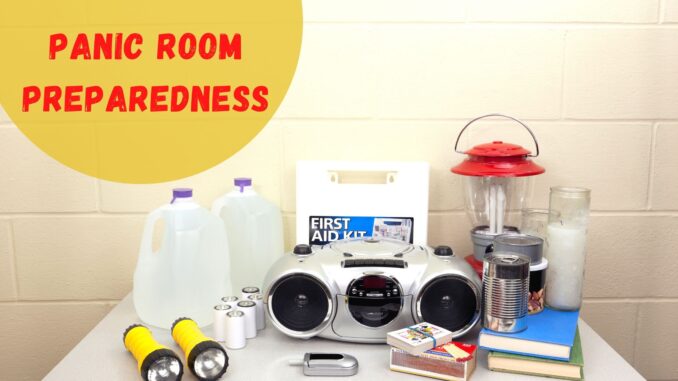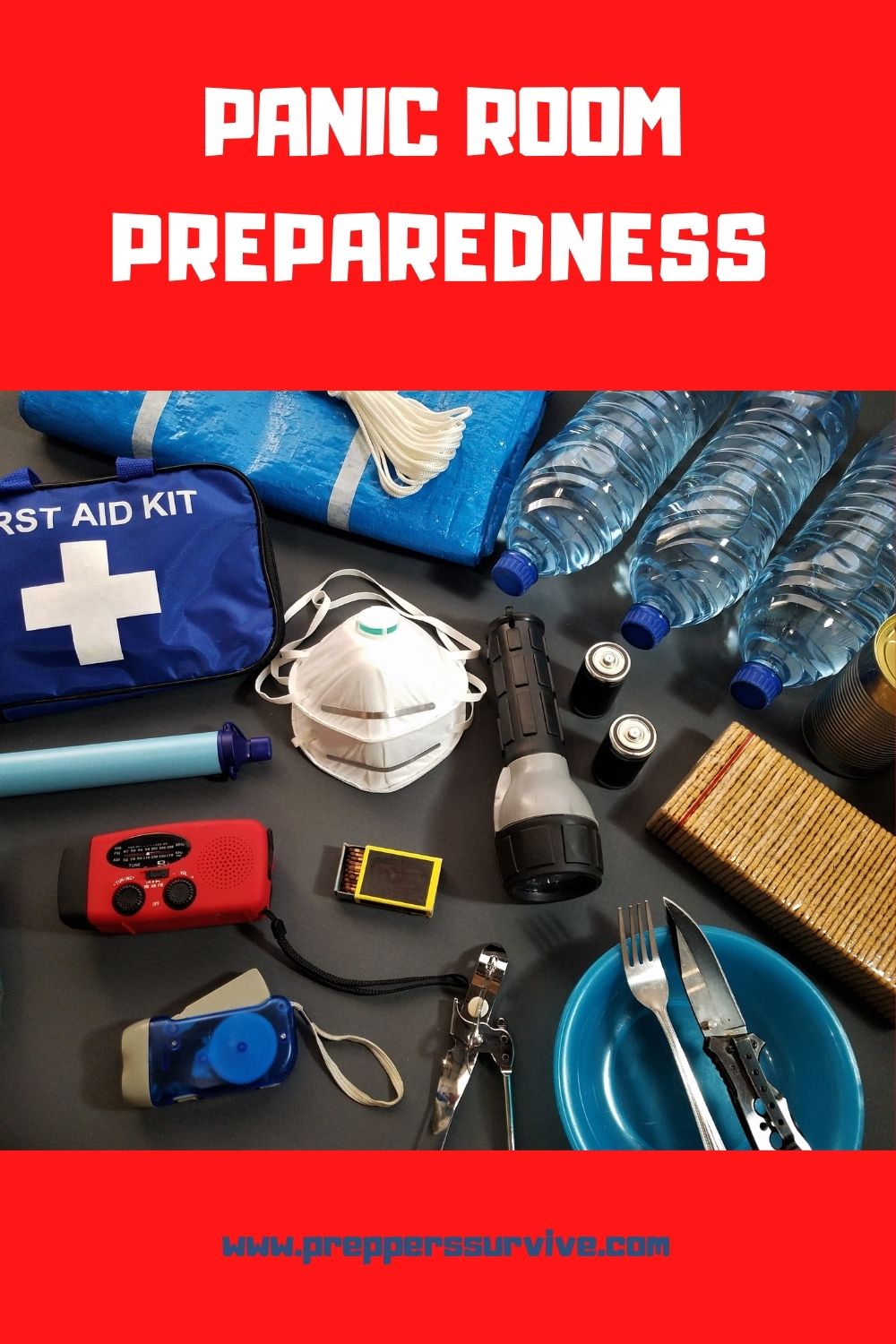
Taking action to protect yourself and your family’s safety is one path to greater peace of mind in an uncertain world. An increasingly common addition to modern homes is a panic or safe room. Panic room preparedness is something you may want to consider.
A safe room can help protect both people and possessions during a home invasion or robbery. Fast access and high security are its primary goals, and the best location is a place near a bedroom. Also, the panic room should be able to survive attacks from firearms and other weapons.
In the event of a home invasion, natural disaster, or other life-threatening incidents, a safe room is a secure, fortified place within your home where you and your family can escape to. It may be anything from a completely fitted basement shelter to a fortified bedroom closet. It is also known as a panic room, and its main aspect is that it gives you precious time before assistance arrives or the danger has passed.
If instead, you are planning your safe room as a shelter from tornados, hurricanes, and other natural disasters, you will need a larger space and stock in with supplies so you can stay there for a more extended time.
The type of panic room you build depends mainly on which threats you want to protect your family against. However, depending on your home, you may need to reinforce an existing room. Here are the main points to consider.
Panic Room Preparedness
- Should you avoid windows?
Windows are a prospective weak spot and may provide an entry point. There should be no windows in a panic room to defend against home invasion. If they are unavoidable, they should be reinforced and upgraded to bulletproof standards.
A window, however, offers an alternate escape route during a natural disaster from a safety room. So if you are building a tornado or hurricane shelter, it can be an advantage.
- Accessibility
It should be close to your main living spaces so you can access it as soon as possible. During an incident, seconds could matter. Ideally, it should be located near your most-used rooms on the lower levels or on the same floor as your bedrooms.
However, do not forget the need for structural protection during natural disasters; in this case, a basement would be a better option, although it is slightly less available.
- Camouflage
Your panic room mustn’t be visible to an intruder; it shouldn’t be noticeable. Hide any visual security features behind wood paneling, using wooden doors with steel cores rather than solid steel. You will have more time to wait for help to arrive if the intruder can’t immediately spot your refuge.
- The Walls
When building a new panic room, thick concrete walls are the ideal alternative, but this may not be an option depending on your house. Fitting fiberglass or Kevlar panels can upgrade standard walls and provide varying degrees of protection against attacks if you fortify an existing space.
- Use Bulletproof materials
All exterior materials should be rated as bulletproof wherever possible. It is impossible to make your panic room impregnable to all grades of guns, but you should use materials that can withstand a few rounds or more. This can slow down an intruder or completely discourage them.
- Security and Communication System
Install a high-quality monitored alarm system with a panic button facility. Make sure the main control panel is within the panic room so that you can control it in safety. You’ll also need a way of communicating with the outside world. Keep a cellphone permanently in the panic room and make sure it’s always charged.
A computer with Wi-Fi is also useful but shouldn’t be relied on as a sole means of communication, as the connection could be disrupted either deliberately or by natural events.
It is also a good idea to install security video cameras around your home and monitor them from inside your safe room. A radio transmitter is also a good idea, especially during natural disasters.
- Essential Supplies
You’ll need space within the room for storing supplies. You can be in your panic room for days, depending on the severity of the situation, and it is crucial to have a variety of supplies to fall back on. Stock a range of non-perishable foods that require no cooking, enough water, medicines, a basic first aid kit, blankets, a flashlight, extra clothes. Lastly, consider leaving some form of self-defense equipment in the room, whether that’s a firearm, taser, or pepper spray.
Finally, everyone in your family should be up to speed with how and when it should be used once your panic room is built and stocked. Create an emergency plan and make sure all your family is aware of the following:
- When is the appropriate time to enter the room? At the first sign of danger or as a last resort?
- Who’s responsible for ensuring younger family members are taken to the room?
- Which authorities will be alerted, and who will do it?
- How will you decide when the danger is over?
Often, as a periodic exercise, practice entering and securing the safe room so that it becomes second nature. You can’t depend on having a fully clear head in a stressful emergency, so careful planning is necessary.
Thanks for visiting Preppers Survive. Before you leave subscribe to our newsletter. If you enjoyed this Panic Room Preparedness, please share it on your favorite social media.



lots of talk about “panic rooms” for riots and looting; keep in mind that if these people are aware of your protected room hold-out – they’d like nothing better than to block you in and set fire to your home ….
your home might be subjected to random arson in a residential riot/loot spree; just seems to be part of their agenda – a panic room might not be advisable for the situation – stay loose and protect yourself ….